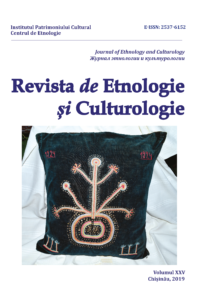Об образе волка и общих сюжетах в мифологии народов Евразии
About the image of the wolf and shared themes in the
mythology of the peoples of Eurasia
Author(s): Elizaveta CVILINCOVA, Vasili SakovichSubject(s): Ethnohistory, Cultural Anthropology / Ethnology
Published by: Institutul Patrimoniului Cultural al Academiei de Științe a Moldovei
Keywords: mythology; cult of the wolf; peoples of Eurasia; Slavic tradition; Belarusians;
Summary/Abstract: The article explores the image of wolf, which occupies one of the central places in the culture of the Eurasian people. Particular attention is paid to the idea of a wolf-patron. It is emphasized that for the Slavic peoples the wolf has various roles, including as a patron. Due to the fact that the cult of the wolf is worshiped among the Byelorussians, but up to the present it has not been the subject of a separate study, the authors briefly dwell on this issue. Legends about the city of Volkovysk, the name and/or the foundation of which is associated with the veneration of wolves by local residents, are considered. It is noted that the flag and coat of arms of the city has the image of a wolf. The cited historiographical data prove that the worship of the wolf among the Slavs and the Turkic-Mongolian peoples has a different basis. The Slavs perceived the wolf as “alien” while the Turkic and Mongolian peoples – as blood relative. It is noted that the beliefs about the transformation of people into wolves («lycanthropy») are widespread among the Slavic peoples – Russians, Ukrainians, Belarusians, Poles, Bulgarians. It is concluded that the mythological view about the sacred wolf in the European epic could have been «imported» from Asia to Europe by nomads.
Journal: Revista de Etnologie şi Culturologie
- Issue Year: XXV/2019
- Issue No: 1
- Page Range: 48-57
- Page Count: 9
- Language: English, Romanian, Russian

